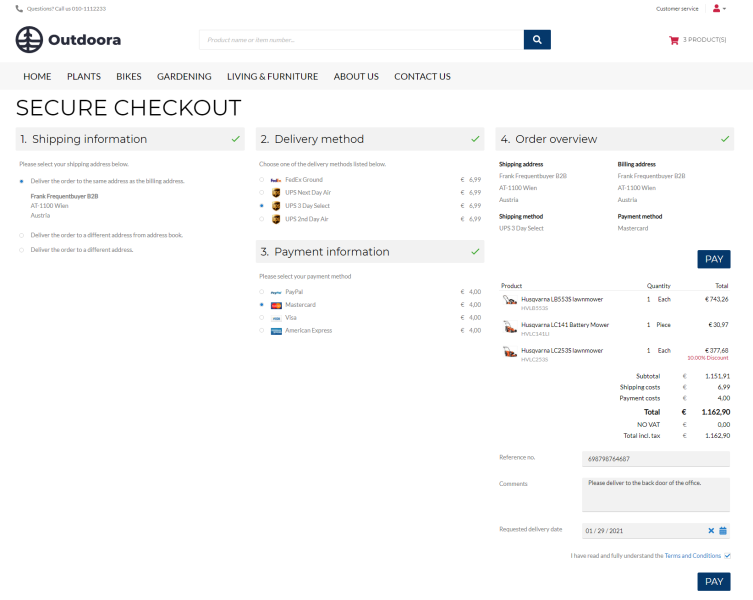Online Payments
All online payment methods supported by Sana Commerce Cloud rely on third-party payment service providers to process your customers’ payment transactions. These payment service providers might enforce different requirements about supported countries, currencies and languages, customer and product data, security, etc.
Before you go live and take your first order, you need to decide what payment methods and services you want to use, and then set up them for your webstore so that your customers can choose the preferred payment method at checkout. To choose the correct payment service provider and payment methods, first make sure that you understand their requirements. To help you with this, all payment app guides contain information about different features that each payment app supports. There you will find general information about the payment service providers supported by Sana Commerce Cloud and their main requirements. For more detailed information, you must refer to the official documentation of the payment service provider you are interested in.
Sana Commerce Cloud integrates with different payment providers across the world, such as Sana Pay, PayPal, Authorize.Net, CM Payments, WorldPay, etc. Not all payment gateways are available to all countries and currencies. Therefore, you must choose the right payment service provider that suits your business. Refer to the Sana Apps section to see the complete list of payment providers that are supported by Sana Commerce Cloud.
A payment gateway is a payment service provider that processes credit and debit card payments online. Sana Commerce Cloud integrates payment gateways into its system to provide a way to accept payments from the webstore customers online. A payment gateway can be integrated into Sana by installing the payment app. You can install one or several payment apps.
Payment gateways provide different payment methods that your customers can choose from to pay orders, such as Visa, MasterCard, American Express, etc.
Sana Commerce Cloud supports two scenarios of how your B2B customers can pay their orders online:
-
A B2B customer can pay an order while placing it. In this case, the payment journal is not created in the ERP system and an accountant should handle this manually.
-
A B2B customer can pay one or multiple outstanding invoices. In this case, the payment journal will be automatically created in the ERP system. Online payments of the open invoices from a Sana webstore are seamlessly integrated with the sales order processing and cash management modules of the ERP system. This allows to accept credit card payments and have the transactions follow through with the orders to your ERP system. For more information, see Online Invoice Payments.
There are three main players when it comes to processing credit and debit card transactions:
-
You, the merchant: To accept credit and debit card payments, you need to partner with a bank that will accept payments on your behalf and deposit them on your account.
-
Your customer: When your customers buy some goods in your webstore, they pay with their credit or debit card. Money is transferred from the customer's (issuing) bank account to your (merchant) bank account.
-
Payment gateway: A payment gateway acts as an intermediary between your business and banks. When merchants select a particular payment gateway, they will need to connect it to their merchant account. A merchant registers an account with the payment gateway to connect it to the Sana webstore.
